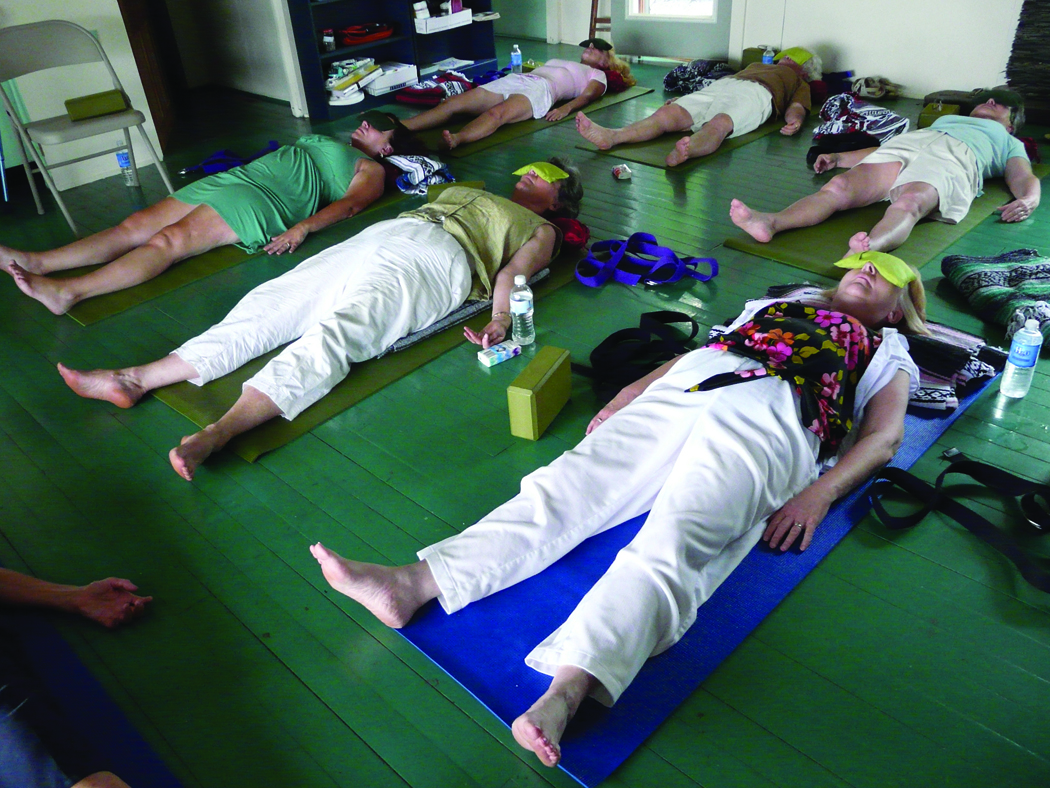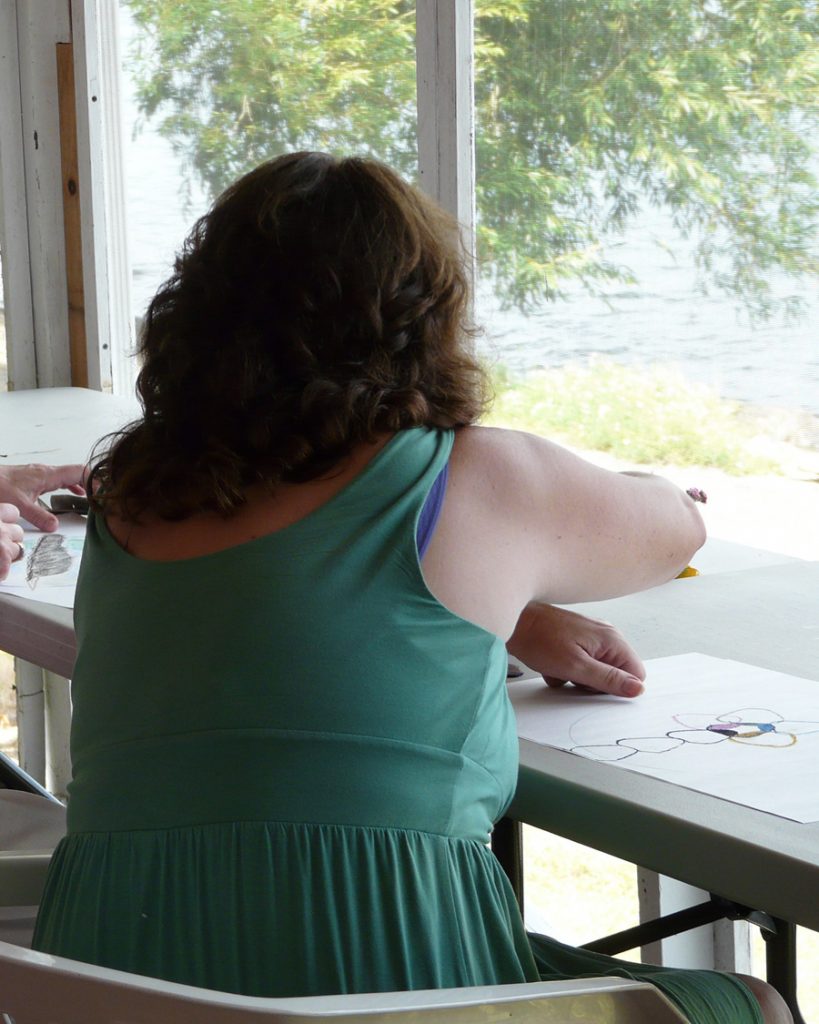February 13, 2020 | Dr. Ellen Horovitz, ATR-BC, LCAT,RYT 500, C-IAYT
In addition to the current scholarships available, AATA is pleased to announce a brand new opportunity this year! Applications for the new Dr. Ellen G. Horovitz Spiritual Art Therapy Scholarship are now being accepted through May 1, 2020.
Find the guidelines on MyAATA and email us at info@arttherapy.org with any questions. We asked Dr. Horovitz to answer some questions about her scholarship fund.
What’s your vision for this scholarship?
My intention for this scholarship is to aid a promising practitioner or student in his/her/their pursuit of expanding the field of Spiritual Art Therapy as it relates to mind/body practices. Spiritual Art Therapy has expanded broadly since my 1994 publication and is now in its 3rd edition. Because my current work now incorporates my training as a certified yoga therapist, applications for this award might incorporate somatics as it relates to therapy and mind/body centering. My latest book, Head and HeART: Yoga Therapy & Art Therapy Interventions for Mental Health Practitioners will be available through Handspring Publishers by early spring of this year and showcases that shift between yoga therapy and art therapy in mind/body/spirit practice.

Patient artwork
Having authored a number of books on the topic, how do you describe the concept of spiritual art therapy? Are there any misconceptions?
Unfortunately, there are lots of misconceptions around “spirituality.” Many people erroneously equate spirituality with religiosity. They are not the same. While there are numerous concepts and definitions for spirituality, I view this as the basic tenet of one’s belief system that results in one’s actions in the world. As a result, I created an assessment tool (the BATA- the Belief Art Therapy Assessment) that allowed a practitioner to glean a greater sense of how a patient’s beliefs (or lack thereof) activated that operation from a family systems perspective (since one rarely operates solely without influence from outside sources).
- ocean view
When did you first start integrating spirituality and mind/body practice into your work? Was there a client or experience that inspired this approach?
Oh my, there were so many influences, including my own that inspired this direction. But the basic premise of the book spiraled out of my work with my patients.
In the past, religious and spiritual needs were entrusted entirely to the clergy. Baptism, last rites, confirmation, communion, and even prayer were relegated to religious leaders. And often these forms of religious and spiritual paths still remain with the clergy. But as society has moved towards a more technologically connected society, many have been leaving these houses of worship and seeking other forms of communion. This is apparent when 50 plus people continually show up to my Saturday or Sunday morning yoga class, not just to practice yoga āsanas (poses) but also to mingle with their “community” (sānga) and experience santosha (contentment).

Savasana
But there has been a chasm for any clinician who has faced a patient’s spiritual questions, struggle with faith, and/or desire for forgiveness. Years prior, there were several options when this arose in treatment: 1) ignoring the spiritual dimension of the patient; 2) chalking up the patient’s thinking as floridly psychotic; 3) referring the patient to a clergy person without participating in that aspect of care (thus, defeating a systemic approach); 4) referring the patient to a clergy person without participating in that aspect of care (thus, defeating a systemic approach); and /or 5 ) attempting to spiritually counsel the patient.
I believe that spirituality and self-care are a legitimate part of the health care system. I receive numerous referrals from physicians who specifically want their patients to partake in mind/body/practices as a part of their mental health; because of this, I know there has been a profound, societal shift. And for the better.
*Images from Dr. Horovitz’s work under a grant for cancer survivors to receive yoga therapy and art therapy. The group met for four hours first doing yoga, then art therapy, and then shared lunch together. Dr. Horovitz recalls working with this group for two years, over the course of which a few members were lost to cancer. “I also attended the funerals and we did a lot of work around those losses,” she said.
Ellen G. Horovitz, PhD, ATR-BC, LCAT, RYT 500, C-IAYT
 Ellen is currently in private practice and is the COO and co-director of Open Sky Yoga Therapy Training (OSYTT) at Open Sky Yoga Center in Rochester, NY (opening 9/21). She is also Professor Emerita and former director/founder of the graduate Art Therapy program at Nazareth College. She has 40 years of experience with myriad patient populations (aged 3-96) as a licensed art therapist, psychotherapist, registered yoga teacher, and a certified yoga therapist (iayt.org). Ellen has authored more than nine (9) books, (two have been translated into Korean), has numerous chapter publications and peer-reviewed journal articles. To learn more about her book publications, visit Ellen’s Amazon page and her websites: Yogartherapy.com; Openskyyoga.com.
Ellen is currently in private practice and is the COO and co-director of Open Sky Yoga Therapy Training (OSYTT) at Open Sky Yoga Center in Rochester, NY (opening 9/21). She is also Professor Emerita and former director/founder of the graduate Art Therapy program at Nazareth College. She has 40 years of experience with myriad patient populations (aged 3-96) as a licensed art therapist, psychotherapist, registered yoga teacher, and a certified yoga therapist (iayt.org). Ellen has authored more than nine (9) books, (two have been translated into Korean), has numerous chapter publications and peer-reviewed journal articles. To learn more about her book publications, visit Ellen’s Amazon page and her websites: Yogartherapy.com; Openskyyoga.com.


